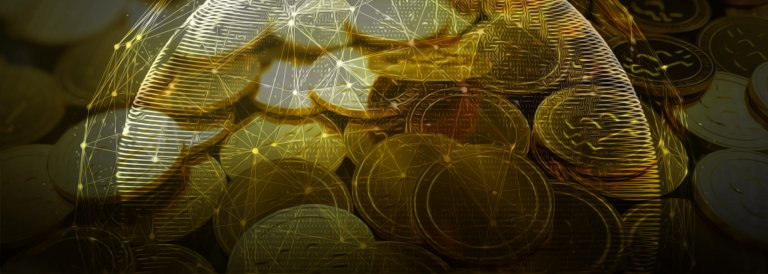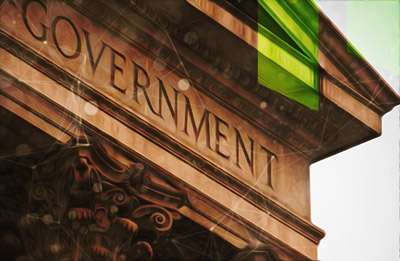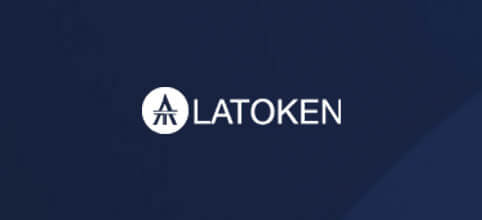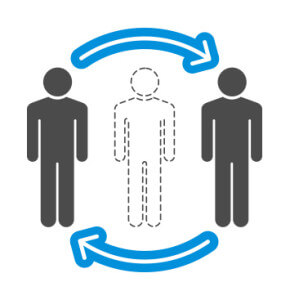 A Glimpse into the World of Tokenized Assets
A Glimpse into the World of Tokenized Assets 
Cover art/illustration via CryptoSlate. Image includes combined content which may include AI-generated content.
“The last time we used tokens,” Grandpa said, “was to catch rides at the fair. And it was great fun too.”
“Yes, but this token is different,” I replied. “It’s not like the bag of plastic coins you bought at the merry-go-round. These tokens are all inside computers, and they’re busy changing our lives.”
“What exactly do you mean?” Grandpa asked, looking confused.
We’re all forgiven for losing track lately. Many of us might feel as though we’ve just woken up from a long sleep and that the world has adopted a whole new language in the meantime. Nonetheless, let’s try and wrap our heads around the tokenization of assets. Understanding digital evolution is important, and a good place to start would be the beginning of the millennium.
The creation of the World Wide Web and its Internet of information around two decades ago was an unprecedented technological revolution. During that time, inventors and creators toiled frantically to deliver the next game-changer, all in the name of improving our lives on a grand scale.
The Inevitable Migration
For twenty years businesses and institutions gradually migrated to the Web. At first, they did so only halfway – from bricks-and-mortar to “bricks-and-clicks.” That was soon followed by online businesses with no physical outlets. For quite a while now we’ve been making buy, sell and payment transactions on the Internet.
Today, the Internet of value is the backbone and key driver of the digital age that we live in.
The next intuitive step for tech was to bring complete real-world processes securely to cyberspace. In stepped blockchain. Although blockchain came as part-and-parcel of Bitcoin in 2009 (and was only really meant to serve as the cryptocurrency’s own “operating system” outside of traditional channels), the world took notice of the revolutionary concept. Today, blockchain is referred to as a technology in its own right, and is arguably the hottest buzzword around currently.
 The primary benefit of blockchain technology is that it eliminates the need for middlemen. Although it has many other distinct features, the bypassing of intermediaries already makes blockchain processes much faster and cheaper.
The primary benefit of blockchain technology is that it eliminates the need for middlemen. Although it has many other distinct features, the bypassing of intermediaries already makes blockchain processes much faster and cheaper.
Traditional systems rely on levels of middlemen to enforce trust and integrity within their operations; for instance, simple overseas payments route through an extended network of centralized banks and clearing houses before reaching their destination. Such transactions normally take several days to complete the journey, all the while attracting fees along the way.
The Benefits of the Blockchain
A blockchain system, on the other hand, is a borderless, decentralized ledger which spans across the entire globe, and anyone has access to it. Rather than using intermediaries, trust is ensured on the network by clever computer code, which includes algorithms and cryptographic protocols.
Because the blockchain system is a peer-to-peer network, transactions flow directly between parties; therefore, these transactions normally execute within seconds and at negligible cost.

Blockchain technology also has other characteristics that make it different from classic networks. For instance, Smart contracts are digital agreements between transacting parties on the blockchain (represented by computer code) which execute when contractual conditions have been met.
Further, a process known as “consensus” helps to keep inaccurate or potentially fraudulent transactions out of the database. The immutability of data ensures that, once you have agreed on a transaction and recorded it on the blockchain, it can never be changed.
Taken together, as outlined above, the benefits and characteristics of a blockchain system give organizations a high degree of trust in the data and the business network. That level of trust makes blockchain important for the next generation of business applications.
Such applications will include a broad focus on moving anything and everything possible between transacting parties to the blockchain.
Before an asset can travel on the blockchain, a digital value has to be ascribed to it; the asset has to be “tokenized.”
Getting Tokenized
Tokenization is formally defined as the process of replacing sensitive data with unique identification symbols (read, tokens) that retain all the essential information about the data without compromising its security. Or, more to the point, tokenization is the process of converting rights to an asset into a digital token on a blockchain.
Asset tokenization is currently happening for everything from fine art to luxury real estate to ownership of commodities such as sand.

Consider this example in the crowdfunded, real estate investment industry. Let’s say an investment company purchases a select investment property and transports the fully-digitized property title as an asset into their blockchain system by means of a smart contract. The asset is then subdivided into fractions – or tokens – which are offered for sale to investors.
Token ownership gives the holder thereof a proportionate right to the regular income of the property (in the case above, such as rentals received), and a similar right to the capital proceeds should the property be sold outright.
The major benefits experienced by the investment company from tokenizing the assets in their real estate investment business model are global reach and enhanced liquidity. By purchasing tokens, international investors can partake in the opportunity without major fund requirements or cross-border restrictions; the offer is fully subscribed.

Furthermore, because investors can trade the tokens among themselves or in the open market, the company’s operations and liquidity remain unaffected when internal ownership changes occur between the token holders.
By way of contrast, in days gone by it was often necessary to completely sell off investment properties just to pay out owners wishing to exit.
Economists agree that investments in tokenized assets may be worth as much as 20 to 30% more than their traditional counterparts.
Investors find tokens more attractive and are willing to pay a “liquidity premium” because there are less “frictions” to buy and sell them in the open market. That’s contrasted with the cumbersome legalities, costs, and large sums involved when exchanging property ownership the traditional way.

It may seem as though the tokenization of assets augurs a bright future. But, not so quick, experts warn. The concept is still in its baby boots and it may take several years (or perhaps even a decade or two) for traditional disciplines, systems and protocols to “get with the program.”
Additionally, using our investment company example above, potential problems include regulatory concerns; technology evolves quickly, but regulation does not. There are also potential governance concerns. For instance, if the same building now has 10,000 fractional owners instead of one, two or three full-owners, who’s going to worry about the maintenance?
Opportunity always comes with pros and cons. Technology seems to have gotten most of the big ticket items right in the past and has enjoyed overall advancement in the long run. In time, the leveraging of blockchain applications –such as the tokenizing of assets – should not prove any different.













































 The primary benefit of blockchain technology is that it eliminates the need for middlemen. Although it has many other distinct features, the bypassing of intermediaries already makes blockchain processes much faster and cheaper.
The primary benefit of blockchain technology is that it eliminates the need for middlemen. Although it has many other distinct features, the bypassing of intermediaries already makes blockchain processes much faster and cheaper.





